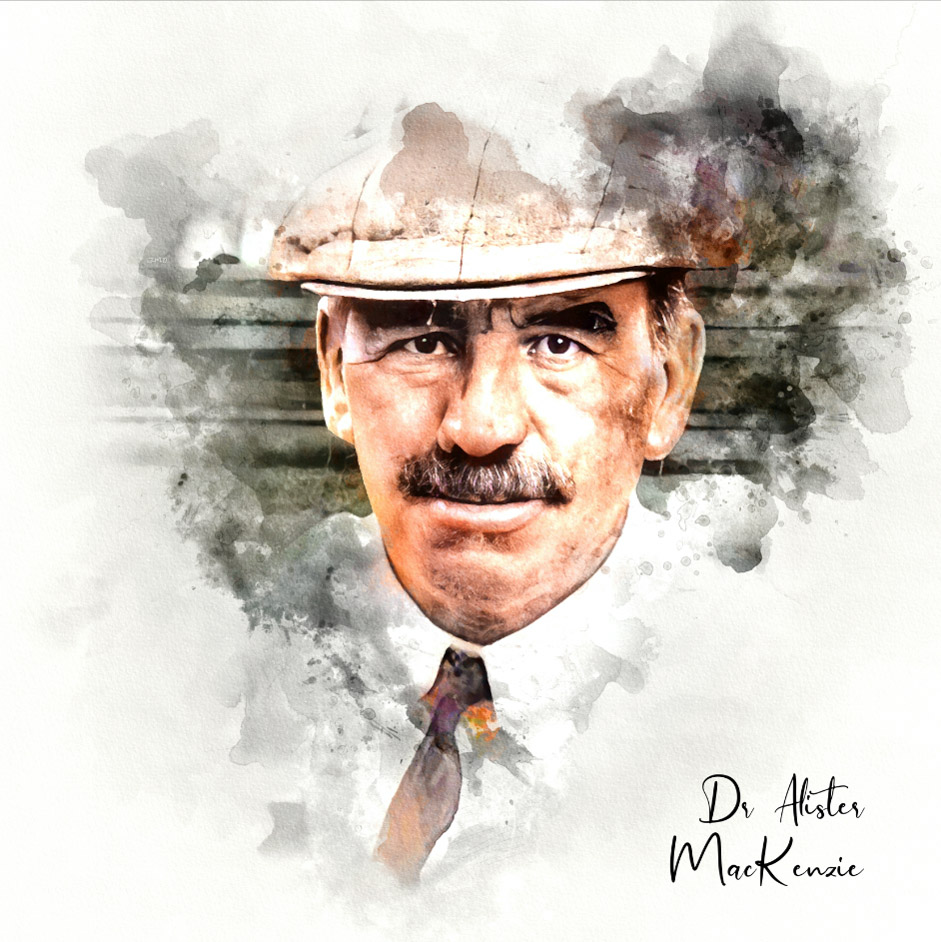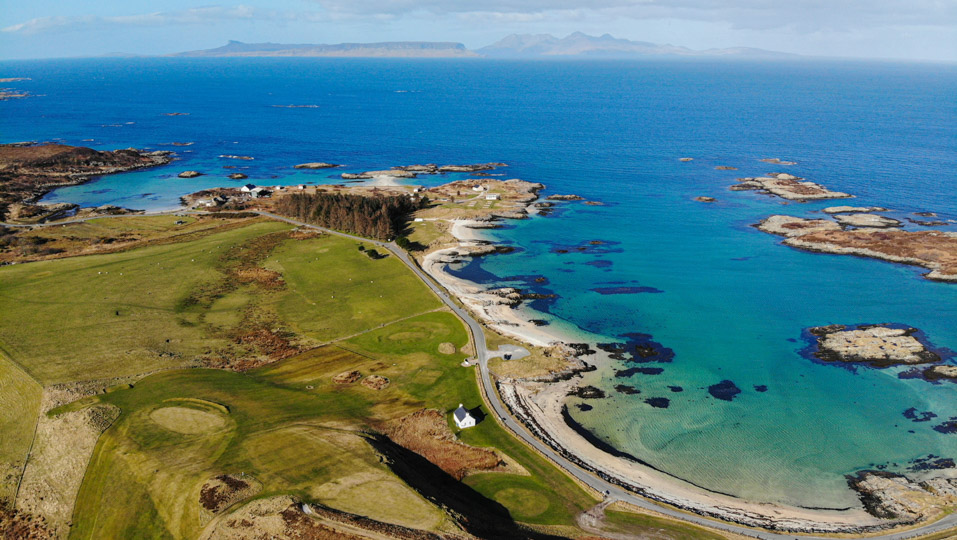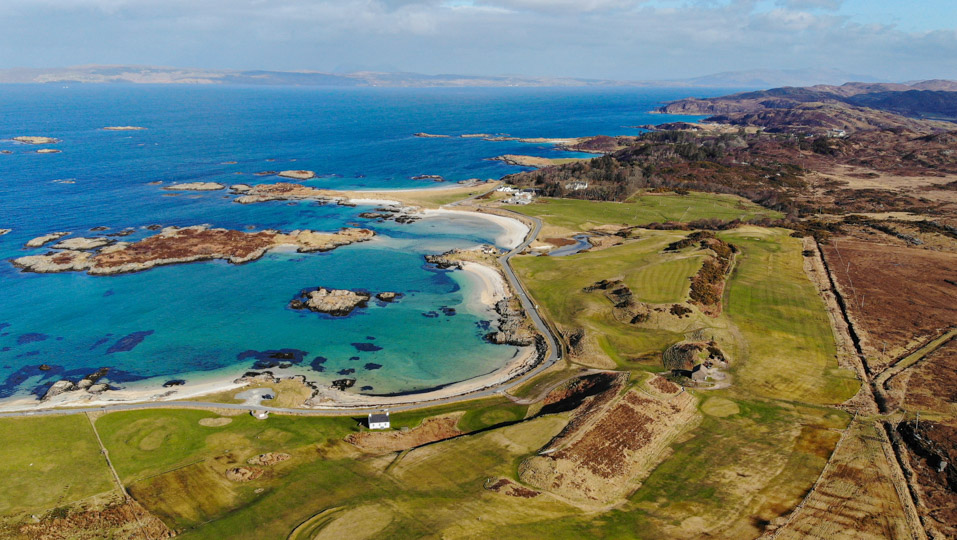Traigh Golf Course

Overview
The clubhouse is built in the fashion of a traditional Highland But & Ben Cottage native to the region.
Buy one of the unique golf course guides sporting one-off artwork of the course.
Golf Course Review
Traigh Golf Course is the most westerly golf course on the UK mainland. Traigh is the Gaelic word for beach and, as such, the course is aptly named. Traigh Golf Course is breathtakingly beautiful. The turquoise waters and white sand of Traigh Beach accent stunning views of the Isles of Rum, Eigg, and Muck.
Traigh Golf Course History
Golf in the area dates to about 1900 when a private course was established for the sole use of the owners and their mates. In 1993, Jack Shaw Stewart, the owner of the course, invited former R&A Captain and golf course architect, Johnny Salvesen to redesign the course. Former Arisaig local Jimmy MacDonald, a former Head Greenkeeper at Royal Lytham & St Annes, provided the needed expertise with regards to the turf.
Traigh Golf Course Synopsis
Traigh Golf Course is a 9-hole layout that temps at every turn. A par 34 and just 2456 yards, the hallmark of the design is risk & reward. You never play two holes of the same sort in a row. Of the 9 holes on offer, two are Par 5's, three are Par 4's and four are Par 3's with OOB coming into play on four holes.

The opening hole is an uphill par 3 of 120 or so yards that plays to about 140 yards. The final hole plays roughly the same but in reverse. The highlight on the 9th is the mounding greenside. Simple and effective - there is no reason why every course couldn't sport the same genius.

The dual fairway second hole with massive punchbowl green and the short par 3 5th with the backdrop of the Isle of Skye and the Red and Black Cuillins are but two memorable highlights.

The 4th and 6th are of similar ilk. Both require a well-placed tee shot in order to access the green despite being blind on the approach.
Traigh's Strength - Its Backbone
The 7th and 8th play on the rear side of the three-part ridgeline that serves as the 'backbone' of the course. It is used on every hole in every conceivable way. This singular element is leveraged but it isn't gimmicky nor repetitive. Simply put, it's a great lesson in the use of a topographical feature that could have produced an otherwise bland course if not used so adeptly.
Here is how each hole uses the ridgeline that runs parallel to the bay and bisects the site:
- Hole 1 - Played to echelon green atop the ridge.
- Hole 2 - Alternative route along the top of the ridge to punchbowl in the ridge.
- Hole 3 - Tee off the ridge to the green site below.
- Hole 4 - Green site on the far side of the ridge of the Klondyke variety.
- Hole 5 - Tee off the end of the ridge.
- Hole 6 - Blind green site of the Dell variety.
- Hole 7 - The line of play is parallel to the ridge.
- Hole 8 - Green atop the ridge. To hold green must use the ridge and feed the ball in.
- Hole 9 - Tee off perpendicular to the ridge to green below.
Traigh Golf Course - Videos
Watch a wee video of Traigh Golf Course

Featured Architect: MacKenzie, Alister
As taken from his book, Golf Architecture, Alister MacKenzie felt the following were essential: The course, where possible, should be arranged in two loops of nine holes. There should be a large proportion of good two-shot holes and at least four one-shot holes. There should be little walking between...








